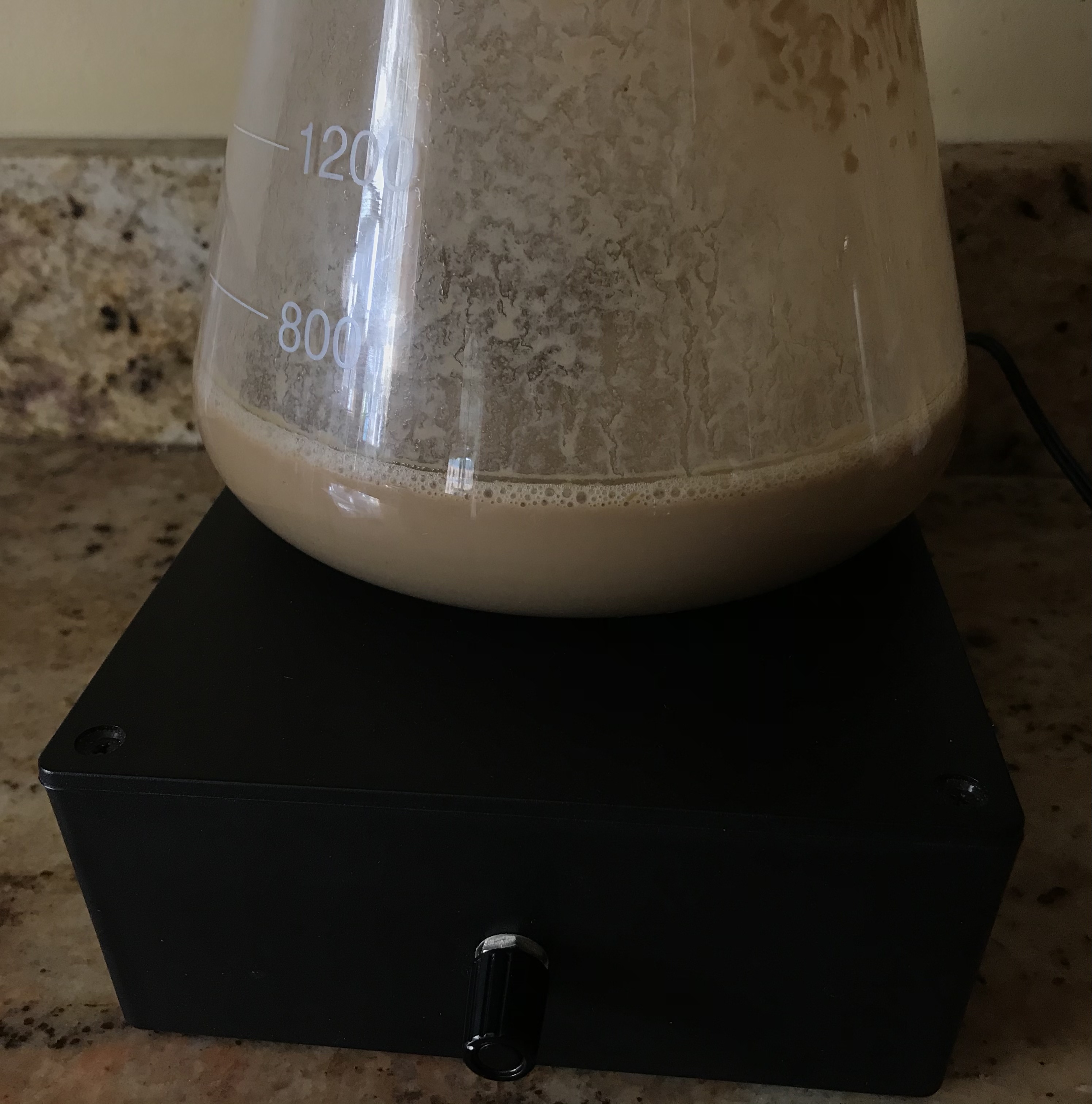KookyBrewsky
Well-Known Member
- Joined
- Feb 23, 2020
- Messages
- 363
- Reaction score
- 121
Hello,
I randomly harvested this yeast a while back for some reason, at least half a year ago. Wyeast American ale, it’s been sitting in a mason jar in the fridge for a while.
My next brew will feature the same yeast, so I didn’t order a new batch. I have maybe 8-10oz worth of the yeasty, thick sludge.
I’ve been using starters for a while, but this time my stir plate barely latches except at max setting, and it’s the heavier duty one from Stirstarter. This yeast is thick, and I mean sludge supreme. I used just a bit more DME this time and dumped all the yeast in there.
Any advice or is all I can do cross my fingers and hope for the best? That amount of thick yeast sludge shouldn’t be too much?
I randomly harvested this yeast a while back for some reason, at least half a year ago. Wyeast American ale, it’s been sitting in a mason jar in the fridge for a while.
My next brew will feature the same yeast, so I didn’t order a new batch. I have maybe 8-10oz worth of the yeasty, thick sludge.
I’ve been using starters for a while, but this time my stir plate barely latches except at max setting, and it’s the heavier duty one from Stirstarter. This yeast is thick, and I mean sludge supreme. I used just a bit more DME this time and dumped all the yeast in there.
Any advice or is all I can do cross my fingers and hope for the best? That amount of thick yeast sludge shouldn’t be too much?

















![Craft A Brew - Safale S-04 Dry Yeast - Fermentis - English Ale Dry Yeast - For English and American Ales and Hard Apple Ciders - Ingredients for Home Brewing - Beer Making Supplies - [1 Pack]](https://m.media-amazon.com/images/I/41fVGNh6JfL._SL500_.jpg)








































 . Cheers!
. Cheers!